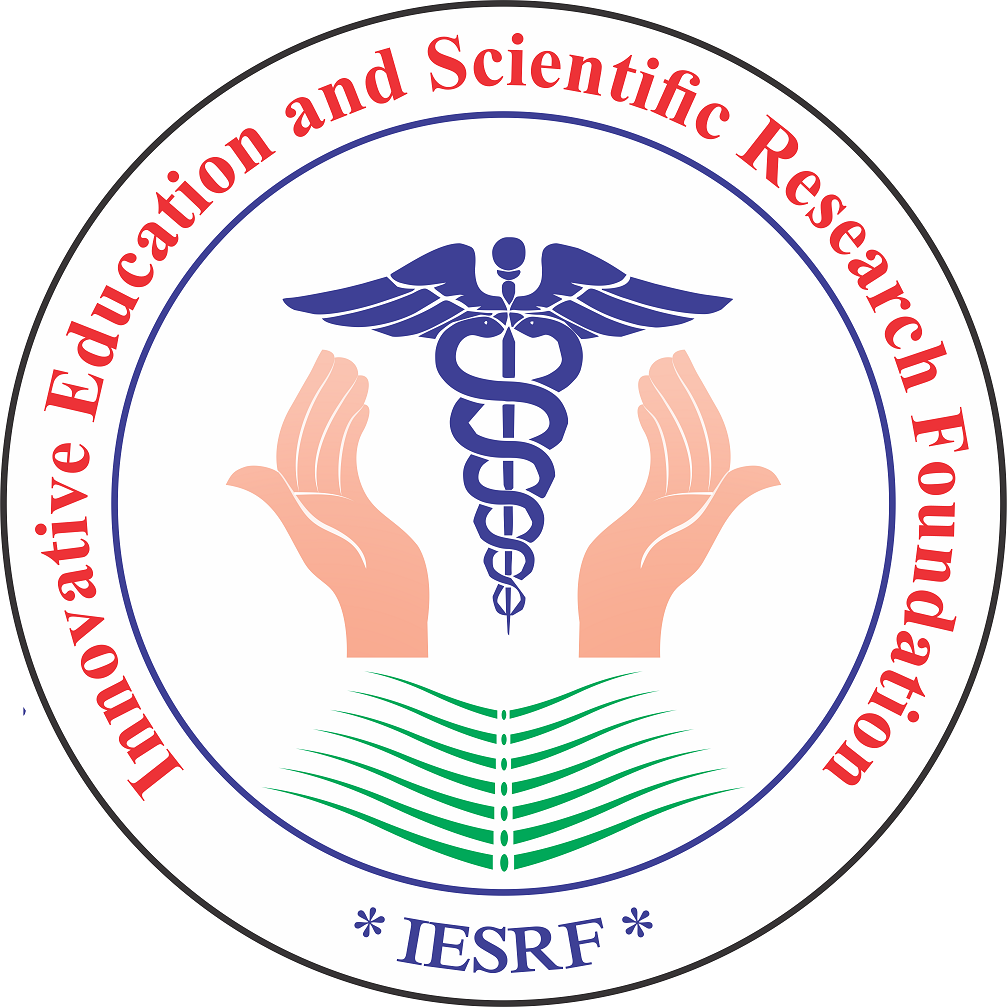- Visibility 52 Views
- Downloads 39 Downloads
- Permissions
- DOI 10.18231/2394-5478.2018.0060
-
CrossMark
- Citation
Identification of emerging Chryseobacterium indologenes sepsis using automated identification system, Matrix-assisted Laser Desorption Ionization-time-of-flight Mass Spectrometry (MALDI-TOF) and Pulsed-field Gel Electrophoresis (PFGE) typing
- Author Details:
-
Awadhesh Kumar
-
Chinmoy Sahu
-
Avinash Singh
-
Kashi Nath Prasad
-
Tapan K. N. Dhole
Chryseobacterium indologenes is a non-motile, catalase-positive, oxidase-positive, indole-positive, non-glucose-fermenting Gram-negative bacillus that produces yellow coloured colonies on routine culture media. As common environmental saprobe, it is a known colonizer of inanimate objects in the hospital environment. Chryseobacterium indologenes is an emerging .pathogen of nosocomial origin in background of increased use of higher antibiotics. In the present study, positive blood cultures bottled from critically ill patients suspected of nosocomial sepsis were inoculated on routine bacteriological media for a period of six months. The identity and antibiotic sensitivity of Chryseobacterium indologenes were confirmed by Phoenix automated system® followed by automated MALDI-TOF system and Pulsed Field Gel Electrophoresis (PFGE) typing. All the patients had underlying morbidities (7 out of 7 patients). Phoenix automated system and MALDI-TOF system correctly identified the bacterial isolates. We reiterate the fact that levofloxacin should be the first choice of antibiotic in Chyrseobacterium indologens infections followed by cefoperazone + sulbactam. All the isolates were of different clonality as determined by PFGE. To our knowledge, this is the first report on the identification of Chrysobacterium indologenes isolates using automated system, MALDI-TOF and PFGE in India. So, in ICUs of tertiary care centers, where higher antibiotics are used, this bacteria can be an important cause of nosocomial bacteremia.
Keywords: Chryseobacterium indologenes, sepsis, MALDI-TOF, PFGE, Phoenix automated system
References
- Chen, F. L., Wang, G. C., Teng, S. O., Ou, T. Y., Yu, F. L. & Lee, W. S. Clinical and epidemiological features of Chryseobacterium indologenes infections: analysis of 215 cases. J Microbiol Immunol Infect 2012;46:425–32.
- Vandamme P, J. F. Bernardet, P. Segers, K. Kersters, and B. Holmes. New perspectives in the classification of the flavobacteria: description of Chryseobacterium gen. nov., Bergeyella gen. nov., and Empedobacter nom. rev. Int. J. Syst. Bacteriol 1994;44:827–31.
- Padmaja K, Lakshmi V, Sreekanth Y, Gopinath R. Nebulizer induced superinfection and sepsis with Chryseobacterium indologenes in a postoperative patient with Acinetobacter baumanii pneumonia: a case report and review. Int J Infect Control 2012, v8:i2 doi:
- 3396/ijic.v8i2.019.12
- 4 . Yabuuchi, E., Y. Hashimoto, Y. Ezaki, Y. Ido, and N. Takeuchi. Genotypic and phenotypic differentiation of Flavobacterium indologenes Yabuuchi et al.from Flavobacterium gleum. Holmes et al. Microbiol. Immunol 1990;34:73–6.
- Bhuyar G, Jain S, Shah H, Mehta V K. Urinary tract infection by Chryseobacterium indologenes. Indian J Med Microbiol 2012;30:370-2.
- Kirby, J. T., Sader, H. S., Walsh, T. R. & Jones, R. N. Antimicrobial susceptibility and epidemiology of a worldwide collection of Chryseobacterium spp: report from the SENTRY Antimicrobial Surveillance Program (1997–2001). J Clin Microbiol 2004;42,445–8.
- Reynaud, I., Chanteperdrix, V., Broux, C., Pavese, P., Croize´, J.,Maurin, M., Stahl, J. P. & Jacquot, C. A severe form of Chryseobacterium indologenes pneumonia in an immunocompetent patient. Med Mal Infect 2004;37:762– 4(in French).
- Lin, Y. T., Jeng, Y. Y., Lin, M. L., Yu, K. W., Wang, F. D. & Liu, C. Y. Clinical and microbiological characteristics of Chryseobacterium indologenes bacteremia. J Microbiol Immunol Infect 2010;43:498–
- Chou, D. W., Wu, S. L., Lee, C. T., Tai, F. T. & Yu, W. L. Clinical characteristics, antimicrobial susceptibilities, and outcomes of patients with Chryseobacterium indologenes bacteremia in an intensive care unit. Jpn J Infect Dis 2011;64:520–4.
- Shah, S., Sarwar, U., King, E. A. & Lat, A. Chryseobacterium indologenes subcutaneous port-related bacteremia in a liver transplant patient. Transpl Infect Dis 2012;14:398–402.
- Douvoyiannis M, Kalyoussef S, Philip G, Mayers M M. Chryseobacterium indologenes bacteremia in an infant. International Journal of Infectious Diseases. 2010;14: e531–e532.
- Chang YC, Lo HH, Hsieh HY, Chang SM. Identification and epidemiological relatedness of clinical Elizabethkingia meningoseptica isolates from central Taiwan. J Microbiol Immunol Infect 2014;47:318e23.
- Kienzle, N., M. Muller, and S. Pegg.Chryseobacterium in burn wounds.Burns 2001;27:179–82.
- Nulens, E., B. Bussels, A. Bols, B. Gordts, and H. W. Van Landuyt. Recurrent bacteremia by Chryseobacterium indologenes in an oncology patient with a totally implanted intravascular device. Clin. Microbiol. Infect 2001:7:391–3.
How to Cite This Article
Vancouver
Kumar A, Sahu C, Singh A, Prasad KN, Dhole TKN. Identification of emerging Chryseobacterium indologenes sepsis using automated identification system, Matrix-assisted Laser Desorption Ionization-time-of-flight Mass Spectrometry (MALDI-TOF) and Pulsed-field Gel Electrophoresis (PFGE) typing [Internet]. Indian J Microbiol Res. 2018 [cited 2025 Oct 17];5(2):288-289. Available from: https://doi.org/10.18231/2394-5478.2018.0060
APA
Kumar, A., Sahu, C., Singh, A., Prasad, K. N., Dhole, T. K. N. (2018). Identification of emerging Chryseobacterium indologenes sepsis using automated identification system, Matrix-assisted Laser Desorption Ionization-time-of-flight Mass Spectrometry (MALDI-TOF) and Pulsed-field Gel Electrophoresis (PFGE) typing. Indian J Microbiol Res, 5(2), 288-289. https://doi.org/10.18231/2394-5478.2018.0060
MLA
Kumar, Awadhesh, Sahu, Chinmoy, Singh, Avinash, Prasad, Kashi Nath, Dhole, Tapan K. N.. "Identification of emerging Chryseobacterium indologenes sepsis using automated identification system, Matrix-assisted Laser Desorption Ionization-time-of-flight Mass Spectrometry (MALDI-TOF) and Pulsed-field Gel Electrophoresis (PFGE) typing." Indian J Microbiol Res, vol. 5, no. 2, 2018, pp. 288-289. https://doi.org/10.18231/2394-5478.2018.0060
Chicago
Kumar, A., Sahu, C., Singh, A., Prasad, K. N., Dhole, T. K. N.. "Identification of emerging Chryseobacterium indologenes sepsis using automated identification system, Matrix-assisted Laser Desorption Ionization-time-of-flight Mass Spectrometry (MALDI-TOF) and Pulsed-field Gel Electrophoresis (PFGE) typing." Indian J Microbiol Res 5, no. 2 (2018): 288-289. https://doi.org/10.18231/2394-5478.2018.0060
